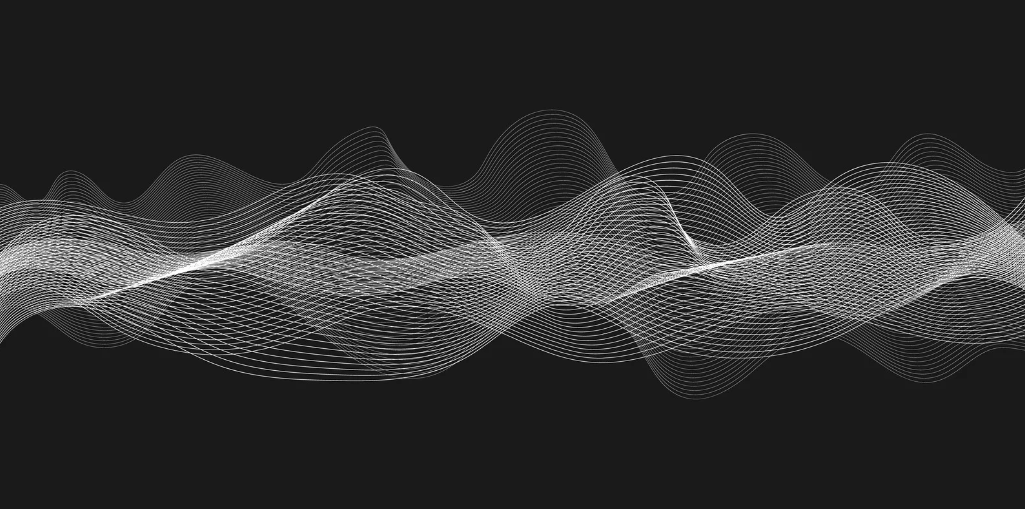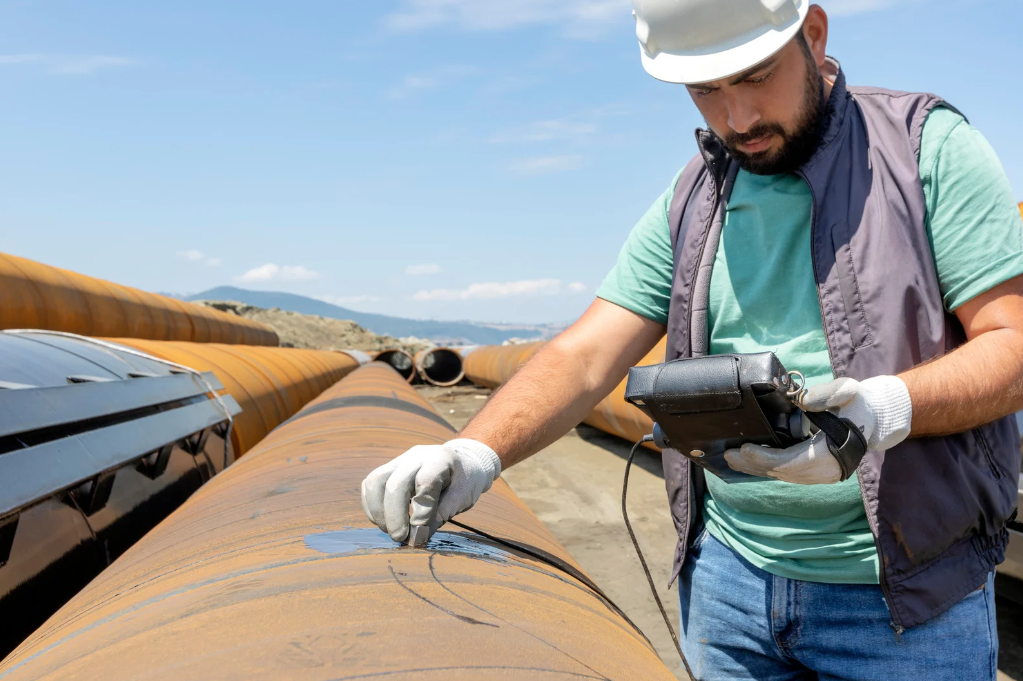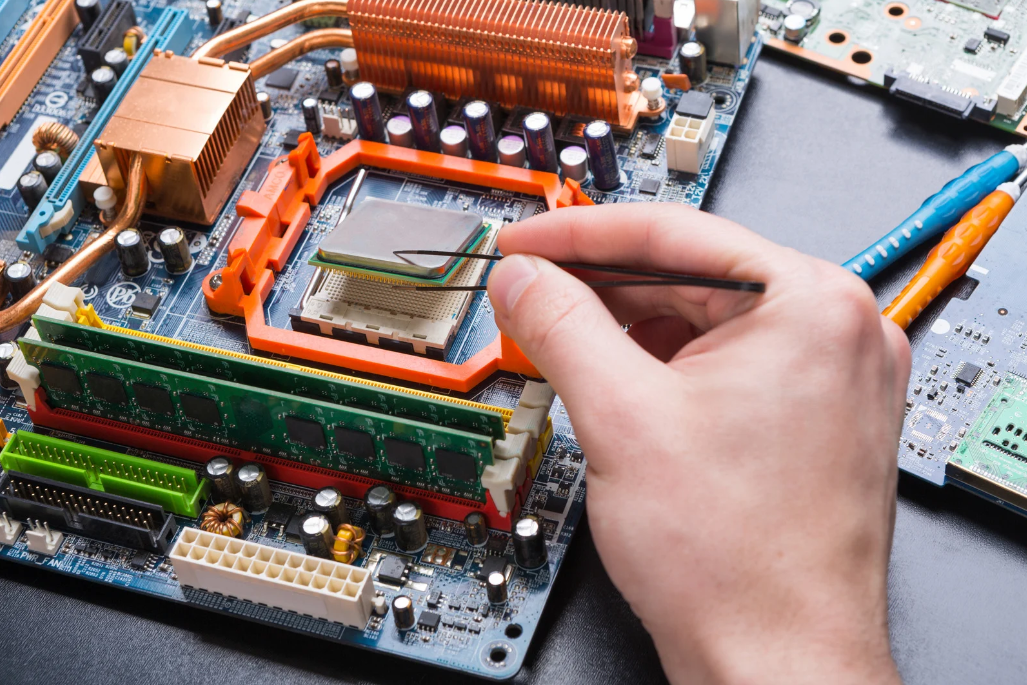Early Sonic Enlightenment and Pioneering Discoveries
The story of ultrasonic transducers starts way back, with early scientists just trying to figure out what sound even was. Think back to the 1700s and 1800s. People like Pierre-Simon Laplace and Ernst Florens Friedrich Chladni were doing experiments, laying the groundwork for understanding sound’s properties. These initial explorations into acoustics were super important for later developments.

- Scientists started to understand the nature of sound waves.
- They began to measure the speed of sound in different materials.
- Early experiments showed how sound could be used to visualize vibrations.
It’s easy to forget that today’s tech marvels have roots in simple curiosity. These early experiments, though basic by today’s standards, were the first steps toward harnessing sound in ways no one could have imagined at the time.
Post-War Advancements and Diverse Applications
After the wars, things really took off. Ultrasonic transducers found uses in all sorts of places. Initially, these transducers were mainly used in sonar during World War I and World War II. Medical imaging started using them, and industries found them useful for non-destructive testing. In 1957, the first commercial ultrasonic flaw detector came out, changing how quality control was done. It was a big deal.
- Medical imaging started to use ultrasound.
- Industries adopted ultrasonic testing for quality control.
- Sonar technology improved significantly.

Technological Progress and Miniaturization
As tech got better, ultrasonic transducers got smaller and more versatile. They could also operate at higher frequencies. This meant they could be used in even more industries, like healthcare (think ultrasound machines) and manufacturing (for making sure things are built right). The growth has been crazy in recent years, with applications popping up in cars, planes, and even environmental monitoring. Advances in transducer arrays and phased array techniques have allowed for better imaging and control over sound fields. The aerospace industry is one of the many that benefited from this.
- Transducers became smaller and more versatile.
- Higher operating frequencies allowed for new applications.
- Integration into various industries expanded rapidly.
| Year | Advancement | Impact |
| 1950s | Development of first flaw detectors | Improved quality control in manufacturing |
| 1980s | Miniaturization of transducers | Enabled portable ultrasound devices |
| 2000s | Development of phased array transducers | Enhanced imaging precision and control in medical and industrial fields |
These days, research is still going on to make them even better. It’s all about materials science, electronics, and signal processing. Ultrasound is super important in engineering and science, and it’s helping us understand the world better.
Understanding Ultrasonic Transducer Technology
So, what’s the deal with ultrasonic transducer technology? It’s actually pretty cool when you break it down. These devices are all about converting energy from one form to another, specifically electrical energy into sound waves (and back again). Think of it like a translator, but for energy. It takes electricity and turns it into something we can’t hear, but that can do some amazing things. Let’s get into the details.
Defining the Ultrasonic Transducer
An ultrasonic transducer is a device that converts electrical energy into ultrasonic waves, and vice versa. These waves are sound waves with frequencies higher than the audible range for humans. Basically, it’s a speaker and a microphone all rolled into one, but for sounds we can’t hear. These ultrasonic transducers are used in a ton of different applications, from medical imaging to industrial testing. They’re the unsung heroes of a lot of modern technology.
The Fundamental Working Principle of Ultrasonic Transducers
The basic principle behind how these transducers work is pretty straightforward. It involves emitting these waves and measuring the time it takes for them to reflect back after hitting an object. This time measurement helps determine the distance and presence of objects. When voltage is applied to a piezoelectric crystal, it vibrates, generating high-frequency sound waves. In reception mode, the transducer detects returning sound waves, converting them into electrical signals. It’s all about sending out a ping and listening for the echo. The working principle is the same, but the applications vary widely.
Radiated Fields and Their Significance
Radiated fields refer to the region or space around the transducer where ultrasonic waves are emitted or received. These fields consist of high-frequency sound waves that propagate through a medium, such as air or tissue. Understanding the radiated fields is vital for precise imaging and measurements in applications like medical diagnostics and Industrial Testing. These radiated fields are essential for applications like medical imaging and industrial testing, where they allow for the transmission and reception of ultrasonic signals, enabling precise measurements and imaging of objects and structures within the medium.
The shape and intensity of the radiated field can be controlled by the design of the transducer. Factors like the size and shape of the active element, the frequency of the ultrasound, and the properties of the surrounding medium all play a role. This control is what allows us to use ultrasonic transducers for such a wide range of applications, from focusing sound waves for precise medical treatments to creating broad beams for detecting objects at a distance.
The Science Behind Ultrasound Waves
What Constitutes Ultrasound?
So, what is ultrasound anyway? Well, it’s sound, but sound we can’t hear. Our ears are only built to pick up sounds in a certain range, usually between 20 Hz and 20,000 Hz. Ultrasound is anything above that 20,000 Hz mark. Think of it like dog whistles; we can’t hear them, but dogs sure can.
- It’s used in medical imaging.
- It’s used in industrial inspections.
- It’s even used by bats to get around!
Ultrasound waves are a form of mechanical energy that travels through a medium, like air or water. They’re longitudinal waves, which means the particles in the medium vibrate parallel to the direction the wave is moving. This creates areas of compression and rarefaction, kind of like how a slinky moves when you push and pull one end.
Frequency and Wavelength Considerations
Frequency and wavelength are super important when we’re talking about ultrasound. They’re related, actually. Higher frequency means a shorter wavelength, and lower frequency means a longer wavelength. This affects how the ultrasound interacts with stuff. For example, higher frequency waves give you better resolution in medical imaging, but they don’t penetrate as deeply. Lower frequency waves go deeper, but the image isn’t as clear. It’s a trade-off!
| Frequency (MHz) | Wavelength (mm in water) | Typical Application |
| 1 | 1.5 | Deep tissue imaging |
| 5 | 0.3 | General purpose imaging |
| 10 | 0.15 | High-resolution superficial imaging |
The Role of Ultrasonic Transducers in Wave Generation
Okay, so how do we make these ultrasound waves? That’s where ultrasonic transducers come in. These devices are the key to generating and receiving ultrasound. Most of them use something called the piezoelectric effect. Basically, you apply an electrical voltage to a special crystal, and it vibrates. This vibration creates the ultrasound wave. And guess what? The same crystal can also work in reverse! When an ultrasound wave hits the crystal, it generates an electrical signal. This is how the transducer receives ultrasound. It’s pretty neat how it all works together. The transducer’s design and the materials used determine the frequency and intensity of the ultrasonic functions it produces.
Key Components of an Ultrasonic Transducer
Ultrasonic transducers are more than just simple devices; they’re carefully engineered systems. Each part plays a vital role in how well the transducer works. Let’s break down the main components.
The Active Element: Piezoelectric Crystals
At the heart of every ultrasonic transducer lies the active element. This is usually a piezoelectric crystal, like quartz or lead zirconate titanate (PZT), that converts electrical energy into mechanical vibrations (ultrasound waves) and vice versa. When you apply an electrical voltage to the crystal, it vibrates at a specific frequency, generating the ultrasonic wave. Conversely, when the crystal is hit by an incoming ultrasonic wave, it produces an electrical signal. The type of crystal used affects the transducer’s sensitivity and frequency range. You can find ultrasound transmitters with different crystal types for specific applications.
The Function of Backing Material
Behind the active element, you’ll find the backing material. Its job is to absorb any ultrasound waves that are traveling backward from the crystal. If these backward-traveling waves aren’t absorbed, they can interfere with the main signal, causing distortion and reducing image quality. The backing material is usually made of a dense, sound-absorbing material like epoxy resin loaded with tungsten. This ensures that the piezo company provides a clean, clear ultrasonic signal.
The Importance of the Matching Layer
Between the active element and the object being examined, there’s a matching layer. This layer helps to efficiently transfer the ultrasound energy from the crystal into the object. Think of it like this: the crystal and the object have different acoustic impedances (resistance to sound). If there’s a big difference in impedance, most of the ultrasound energy will be reflected back at the interface. The matching layer acts as a bridge, gradually changing the impedance so that more energy gets transmitted into the object. Typically, the matching layer is a quarter-wavelength thick and has an impedance value between that of the active element and the object being examined. This is important for non-destructive testing to ensure accurate results.
The matching layer is super important. Without it, you’d lose a ton of signal strength, and the transducer wouldn’t be very effective. It’s all about getting as much of that ultrasonic energy into the thing you’re trying to look at as possible.
Here’s a simple table illustrating the role of each component:
| Component | Function |
| Active Element | Converts electrical energy to ultrasound and vice versa. |
| Backing Material | Absorbs backward-traveling ultrasound waves. |
| Matching Layer | Improves ultrasound energy transfer between the crystal and the object. |
And here are some key considerations for each component:
- Active Element: Material type, resonant frequency, size.
- Backing Material: Acoustic impedance, attenuation coefficient.
- Matching Layer: Thickness, acoustic impedance.
Applications of Ultrasonic Transducers in Modern Healthcare
Ultrasonic transducers have really changed how we approach healthcare. They’re not just about getting a quick peek inside the body anymore; they’re involved in everything from imaging to therapy. It’s pretty amazing how much they’ve improved patient care.
Non-Invasive Medical Imaging
One of the most common uses is in ultrasound imaging, which lets doctors see inside the body without surgery. It’s used to monitor pregnancies, diagnose conditions, and guide procedures. The images aren’t always crystal clear, but they’re good enough to give doctors a lot of information. It’s also pretty safe, which is a big plus. You can learn more about ultrasound imaging and its applications online.
Guiding Critical Medical Interventions
Ultrasonic transducers aren’t just for imaging; they also help guide doctors during surgeries and other procedures. For example, they can help doctors precisely target tumors for radiation therapy or guide catheters through blood vessels. This precision reduces the risk of damaging healthy tissue and improves outcomes. It’s like having a GPS for your insides.
Enhancing Patient Care Through Diagnostics
Beyond imaging, ultrasonic transducers are used in a bunch of diagnostic tools. They can measure blood flow, detect clots, and even assess the elasticity of tissues. This information helps doctors diagnose conditions earlier and more accurately. Plus, with the rise of IoT, these devices are getting smarter, collecting more data, and improving analysis. It’s all about getting a better picture of what’s going on inside the patient.
The integration of ultrasonic transducers into healthcare is constantly evolving. As technology advances, we can expect to see even more innovative applications that improve patient outcomes and make healthcare more efficient. It’s a field with a lot of potential, and it’s exciting to see where it’s headed.
Ultrasonic Transducers in Industrial Applications
Non-Destructive Testing and Quality Assurance
Ultrasonic transducers are super important for non-destructive testing in industries. They let us find problems like cracks and flaws in materials without wrecking them. This is a big deal in fields like aerospace, car making, and building stuff, where making sure things are safe and good quality is key. Basically, these transducers send sound waves into materials, and by looking at how those waves bounce back, we can spot any hidden issues.
- Detecting internal flaws in metal castings
- Inspecting welds for strength and integrity
- Checking composite materials for delamination
Using ultrasonic transducers for testing is way better than older methods that might damage the stuff you’re checking. It’s like giving something a check-up without having to cut it open.

Material Characterization and Integrity Assessment
It’s not just about finding flaws; ultrasonic transducers also help us figure out what materials are made of and how strong they are. By measuring how fast sound travels through something, we can learn about its density, elasticity, and other important stuff. This is super useful for picking the right materials for all sorts of jobs, from building bridges to making tiny computer parts. Understanding ultrasound frequency is key to getting accurate readings.
| Material | Ultrasonic Velocity (m/s) | Density (kg/m³) |
| Aluminum | 6420 | 2700 |
| Steel | 5900 | 7850 |
| Glass | 5640 | 2500 |
Ultrasonic Cleaning and Welding Processes
Ultrasonic transducers aren’t just for testing; they’re also used in cleaning and welding. In cleaning, they make tiny bubbles that scrub surfaces super clean. In welding, they create vibrations that fuse materials together without needing a ton of heat. These methods are great because they’re precise and don’t mess up the materials being worked on. Piezoelectric ceramics are often used in piezoelectric bimorph transducers for these applications.
- Cleaning delicate electronic components
- Welding plastics without melting them
- Creating strong bonds in metal parts
Diverse Applications Across Various Sectors
Ultrasonic transducers aren’t just for hospitals and factories; they’re popping up everywhere! It’s kind of amazing how one piece of tech can be used in so many different ways. Let’s take a look at some of the more interesting places you’ll find them.
Underwater Navigation and Sonar Technology
Think submarines and fishing boats. Sonar, which stands for Sound Navigation and Ranging, relies heavily on ultrasonic transducers. They send out sound waves and then listen for the echoes to map the underwater world. This is super important for navigation, finding objects, and even studying marine life. The military uses it, scientists use it, and even your average fishing boat might have a basic sonar system. It’s all about bouncing sound waves and interpreting what comes back. This is a prime example of human ingenuity.
Environmental Monitoring and Detection
Turns out, ultrasonic transducers are pretty good at keeping an eye on the environment. They can be used to measure things like water flow in rivers, detect leaks in pipelines, and even monitor air quality. For example, in water treatment facilities, ultrasonic flow transducers are essential for measuring flow rates in treatment processes, ensuring quality control, and optimizing water distribution systems. They’re also used in wastewater management to monitor effluent discharge, helping facilities comply with environmental regulations. It’s all about using sound to sense what’s going on around us.
Automotive Collision Avoidance Systems
Those parking sensors in your car? Yep, those are often ultrasonic transducers too. They send out sound waves to detect objects nearby, helping you avoid bumping into things. More advanced systems use them for things like blind-spot monitoring and even automatic emergency braking. These systems are becoming more common as cars get smarter and safer.
It’s interesting to think about how much we rely on these little devices without even realizing it. From helping us park our cars to exploring the depths of the ocean, ultrasonic transducers are quietly working behind the scenes to make our lives easier and safer.
Here’s a quick look at how the range of these sensors has improved over time:
| Year | Typical Range (meters) |
| 2010 | 2 |
| 2020 | 5 |
| 2025 | 8 |
And here are some other applications:
- Measuring tank levels in chemical plants
- Detecting cracks in bridges
- Guiding robots in warehouses
Our products are used in many different areas, from cool medical tools to everyday things like your phone. They help make new ideas happen in lots of industries. Want to see how our smart tech can help you? Check out our website to learn more!
Conclusion
So, as we wrap things up, it’s pretty clear that ultrasonic transducers are a big deal in today’s world. They started out pretty simple, but over time, they’ve really grown into something amazing. Think about it: from helping doctors see inside the body to making sure parts are built right in factories, these little devices are everywhere. They just keep getting better, too, thanks to new ideas in materials and electronics. It’s a good example of how a basic idea can turn into something that helps us out in so many ways, making things safer and just generally better across different areas of life. It’s cool to see how far they’ve come and what they can do.
Frequently Asked Questions
What exactly is an ultrasonic transducer?
An ultrasonic transducer is like a special microphone and speaker rolled into one. It sends out sound waves that are too high-pitched for humans to hear, and then it listens for those waves to bounce back. This helps it figure out how far away things are or what they’re made of.
How do ultrasonic transducers actually work?
These transducers work by using something called a piezoelectric crystal. When you put electricity on this crystal, it wiggles very fast, making the high-pitched sound waves. When those sound waves hit something and come back, they make the crystal wiggle again, which then creates a tiny electric signal that the transducer can ‘hear’.
Where are ultrasonic transducers used in everyday life?
You’d be surprised! They’re used in hospitals for things like seeing babies before they’re born (ultrasounds), in factories to check if materials have hidden cracks, in cars to help you park without hitting anything, and even in cleaning machines to get things super clean with sound waves.
What are ultrasound waves?
Ultrasound waves are just sound waves, but with a much higher pitch than what our ears can pick up. Think of it like a dog whistle – we can’t hear it, but a dog can. These high-pitched waves are great for seeing tiny details or traveling through certain materials better than regular sound.
What are the key parts of an ultrasonic transducer?
The main parts are the special crystal (the ‘active element’) that makes and hears the sound, a ‘backing material’ that stops the sound from going the wrong way, and a ‘matching layer’ that helps the sound move smoothly from the transducer into whatever it’s trying to ‘see’ or ‘hear’.
How do ultrasonic transducers help in healthcare?
They’re super helpful! In healthcare, they let doctors look inside your body without needing to cut you open. This means they can find problems, guide tools during surgery, and generally help keep patients safe and healthy.



